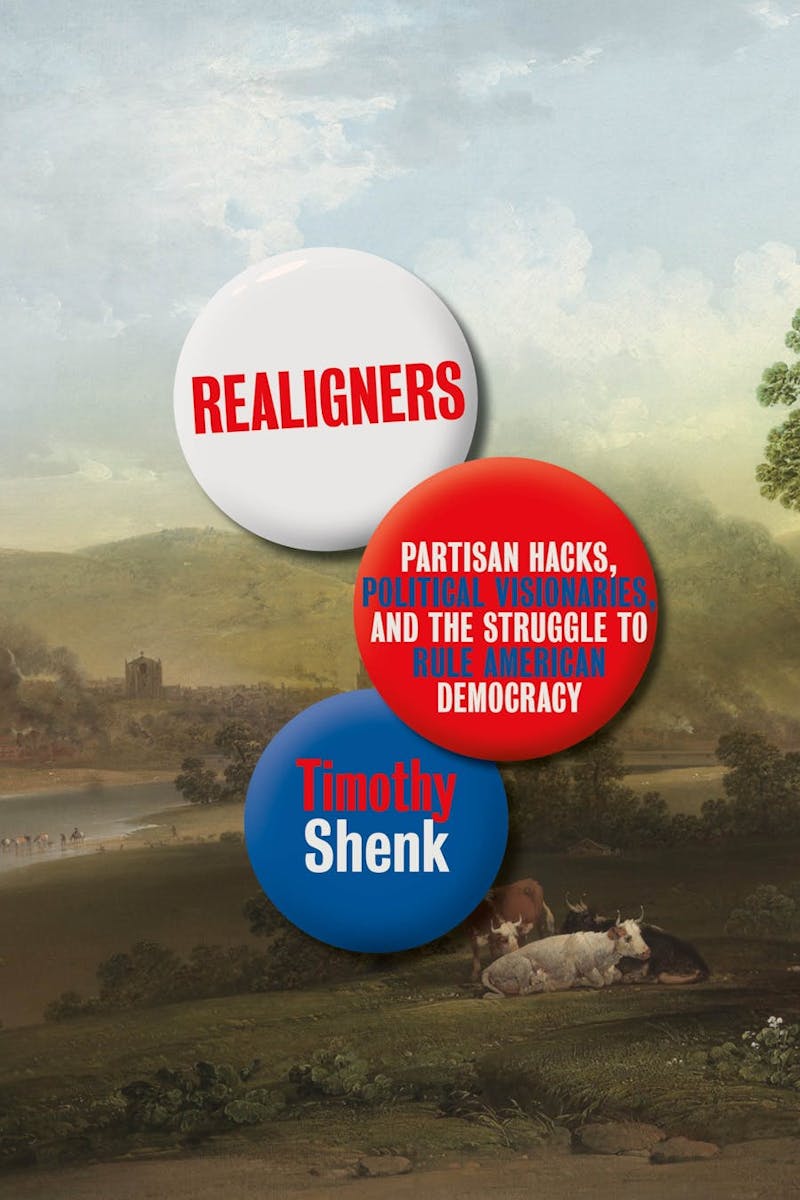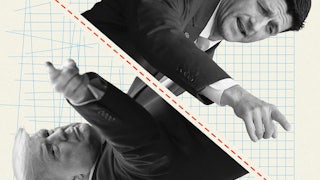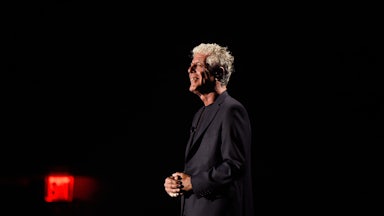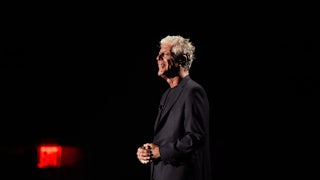Early in his run for president in 2020, Joe Biden drew comparisons with FDR—a president elected during a historic crisis with a mandate for sweeping change. Yet those comparisons had to confront the electoral math in November: FDR’s average margin of victory was 14.9 percentage points; Biden beat Trump by less than five. Democrats held the House and Senate for each of Roosevelt’s three terms; Biden, like Obama and Clinton before him, looks set to lose unified control of Congress after just two years in office. FDR’s New Deal coalition was “the strongest and strangest coalition in American history,” writes historian and writer Timothy Shenk in his new book, Realigners: Partisan Hacks, Political Visionaries, and the Struggle to Rule American Democracy. Why haven’t we seen anything resembling it in the generations since?
Responding to the mix of cynicism and despair that defines our current political moment, Shenk offers a “biography of American democracy told through its majorities, and the people that made them.” How, Shenk asks, did American political leaders from the founding era to the New Deal combine canny coalition-building instincts with a farsighted vision for change, cobbling together enduring popular majorities that fundamentally transformed the country? Can we do it again? I recently spoke with Shenk over Zoom. During our conversation, which has been edited for length and clarity, we talked about how coalitions come together, and the possibility of a new realignment in U.S. politics.

Jack McCordick: On the morning after Trump’s 2016 victory, you woke up convinced you “needed to write a book about … something.” How is this book a response to that moment?
Timothy Shenk: The book really began as an attempt to think through part of the story I felt had been neglected. Much of the post-Trump reckoning had involved looking down at Trump voters and asking what led them to do this crazy thing of voting for Donald Trump. Instead, I wanted to look up at this American political elite and ask, How did things get so screwed up that Trump seems like an answer to some kind of problem?
So the project began as a history of the American political elite. As I was working on it, I was really drawn to this idea that the distinctive power that this elite has is the power to build majority coalitions and bring together millions of people behind a single cause, or at least a single party, for a while. That was especially appealing to me, because I realized that if we as a mass public are going to have any influence over what goes on within that elite, then this imperfect mode of majority coalition-building is the best vehicle we have.
J.M.: You begin the book with the drafting of the Constitution and the forging of the first democratic majorities and go through the Civil War and Reconstruction to the New Deal and up to the present day. What pattern do you see in how these coalitions form?
T.S.: There’s a version of “realignment theory” associated with political scientists like Walter Dean Burnham that says that every generation or so, a new political majority emerges that reckons with larger changes that have been taking place in American society—whether it’s the settling of the West and the Age of Jackson, the rise of industrial capitalism in the Gilded Age, or the crisis of the Great Depression in the 1930s. Out of those social crises emerge new political majorities that get the political system to catch up with social change, and also accelerate those changes. It’s sort of a grand reset for American politics every 30 or so years, like clockwork.
Over the years, an enormous literature has arisen in political science that has picked apart that theory from a variety of angles and shown how the majorities are a lot more fragile, there’s a lot of change from election to election, and everything’s more contingent than this clockwork vision of political realignment allows.
I concede all of that. But I think that realignment is useful to have as a frame because it encourages us to think at any given time about how the pieces of the political system fit together: how a party’s voters, a party’s donors, a party’s policy, the structure of the American state is all of a moment. If you want to change the system, you need to think about it in its totality.
It’s also useful right now, because we can see that the parties’ coalitions themselves are in the middle of changing. We are at the late stages of a process that has been unfolding for a while—not just in the United States but around the world—that has been characterized by the migration of many working-class voters from parties of the left toward parties of the right. If you’re someone like me, who believes that it is important that left-wing parties win elections with support from the working class, that’s a big problem.
J.M.: The first half of your book
traces the making of political majorities up to the mid-twentieth century. But
after the New Deal era, neither party has been able to cement an enduring
political coalition. Why do you think that has been the case?
T.S.: The New Deal coalition is often described as a majority built around pocketbook issues or kitchen table concerns. Those are clichés, and I feel like even saying them will piss off some people who are reading this. But it’s a not bad description for the sort of basic set of economic concerns that New Dealers come back to time and again, while skirting questions about patriotism or about gender or about race.
In the 1960s and after, the story of
politics is the waning of the machine influence of that old party establishment
and its replacement by a new activist class and, eventually, an activist class
that in our time has become a kind of machine in its own right. With the rise
of these activist actors comes a new type of politics that’s polarized around a
set of issues that sometimes today is described as culture-war issues. You have
this sort of self-perpetuating political elite that speaks to a small
percentage of Americans but large enough that you can make quite a lot of money
out of speaking to these folks, especially because they tend to have a good
amount of disposable income on both the right and the left: folks like us who
treat politics as a hobby, as a kind of sport. There’s money to be made in this
and, independent of whether you win or lose an election, the machine can just
keep on ticking. So you have this permanent activist class, which I’m
sympathetic to for lots of reasons. But unlike that earlier machine-oriented
era, it’s easy to lose track of what people who aren’t invested in the politics
of sport believe and instead just keep telling your supporters that the world
is ending for reasons XYZ, therefore give money now.
J.M.: You tell parts of the story through the eyes of observers like Walter Lippman and activists like Phyllis Schlafly rather than directly through the politicians who represent those coalitions. But when you write about more recent history, you go into a deep dive on President Obama. How did you find a way to bring him into the book that felt new?
T.S.: You might ask, why the hell would you want to write about Barack Obama; more words have been spilled on him than any other person in the world, probably with the exception of Donald Trump. But it had my favorite research find in the book, which is a 250-page manuscript that he wrote when he was in law school with his best friend at Harvard, a former economics professor by the name of Robert Fischer. In it Obama outlined his plan for realigning American politics. In that case, it was essentially a program for recreating the New Deal coalition by bringing back working-class whites who had drifted away from the party after the 1960s. But what we can see with time and hindsight is that Obama was much more this bridge figure to the coalition as we know it today, which is [a] Democratic Party that is increasingly dependent on affluent college-educated white suburbanites and has now for decades been struggling with white working-class voters, and is increasingly having a difficult time with Black and brown working-class voters as well.
J.M.: You contrast your book with what you call “skeleton-key histories.” What is a skeleton-key history, and what makes your book different?
T.S.: When you’re telling a big story about American political history, a few popular narratives have tended to dominate over the last century or so. In the Progressive Era, there’s a focus on class as the central determinant of American history. After World War II and the postwar boom, that gives way to a story that puts a lot more emphasis on consensus. More recently, in the age of the 1619 Project, there’s been an emphasis on white supremacy as the underlying thread.
I think that all of those stories have their merits. But the problem with putting any one as the central thread in American history is that, inevitably, any particular historical moment is a complicated, multifaceted, multicausal mess. Instead of having the one universal explanation, I wanted to look at a recurring question, which is, How do you build these majorities? What this lets you do is put an emphasis on change as opposed just seeing the same patterns recur. And even if there’s going to be a lot of continuity along the way, at least we can understand why that continuity occurs, as opposed to just assuming its existence in the first place.
J.M.: You describe our current political moment as a mix of crisis and stagnation, apocalyptic tidings and grinding routine. And yet, as you note, democracy is a “machine engineered to deny permanent resolution.” Things will change. If you were to update this book a generation from now with a new final chapter, who do you think it might be about? Who might be our generation’s “realigner”?
T.S.: The scary thing for me is that right now it’s easy to pick out some figures on the right who you could imagine building a type of Trumpism without Trump that hits those right-wing pleasure points, while appealing to just enough normies to build a lasting coalition.
I was working on this book while Glen Youngkin was first running and then winning in Virginia, and I’m living in Northern Virginia right now, so I had this firsthand seat to how this mixing of Trump and Romney into a newish kind of Republican could crack open a state that had been seen as trending blue so strongly that it would become a fortress for a new Democratic majority. Watching that fall apart was a warning sign for me.
It’s easy for me to see how a DeSantis or Youngkin can draw on the populist elements of Trumpism while bringing in enough of those college-educated suburbanites who have drifted away from the Republican Party in the era of Trump and build a majority, at least in the nearish term, that builds on the structural advantages that the Republican coalition already has. It’s easy to see how that could win lots of elections and make this a worse country without having to force a crisis of democracy. They might make America a worse place, fair and square.
J.M.: That’s a frightening scenario—but do you see any hope for a realignment from the left?
T.S.: I dodged the question of who that left figure can be. Sure, it’s a cliché, but there’s this moment in early 2020 where AOC said that, you know, West Virginia not that long ago voted Democratic, I think that they should do it again. I agree. But I think that a problem that Democrats are facing is that if you think that the way to build a lasting majority is just to give people who watch MSNBC more of what they want to hear, then that’s not going to lead you anywhere you want to go.
So the question is how you can get a figure who emerges on the left and puts front and center the concerns that drive us politically, while also reconciling the need to build a majority coalition with the country that you have. That’s tricky in all its particulars. But I think that in the American public at large, there is a sense that this system is rigged against ordinary people, and that that’s not right. If you can get people to move past their assumption that politicians are full of shit and nothing is ever going to change, there is a majority out there waiting to be called to a broad progressive effort of helping rewrite the rules in a system that has been skewed radically toward the powerful.






